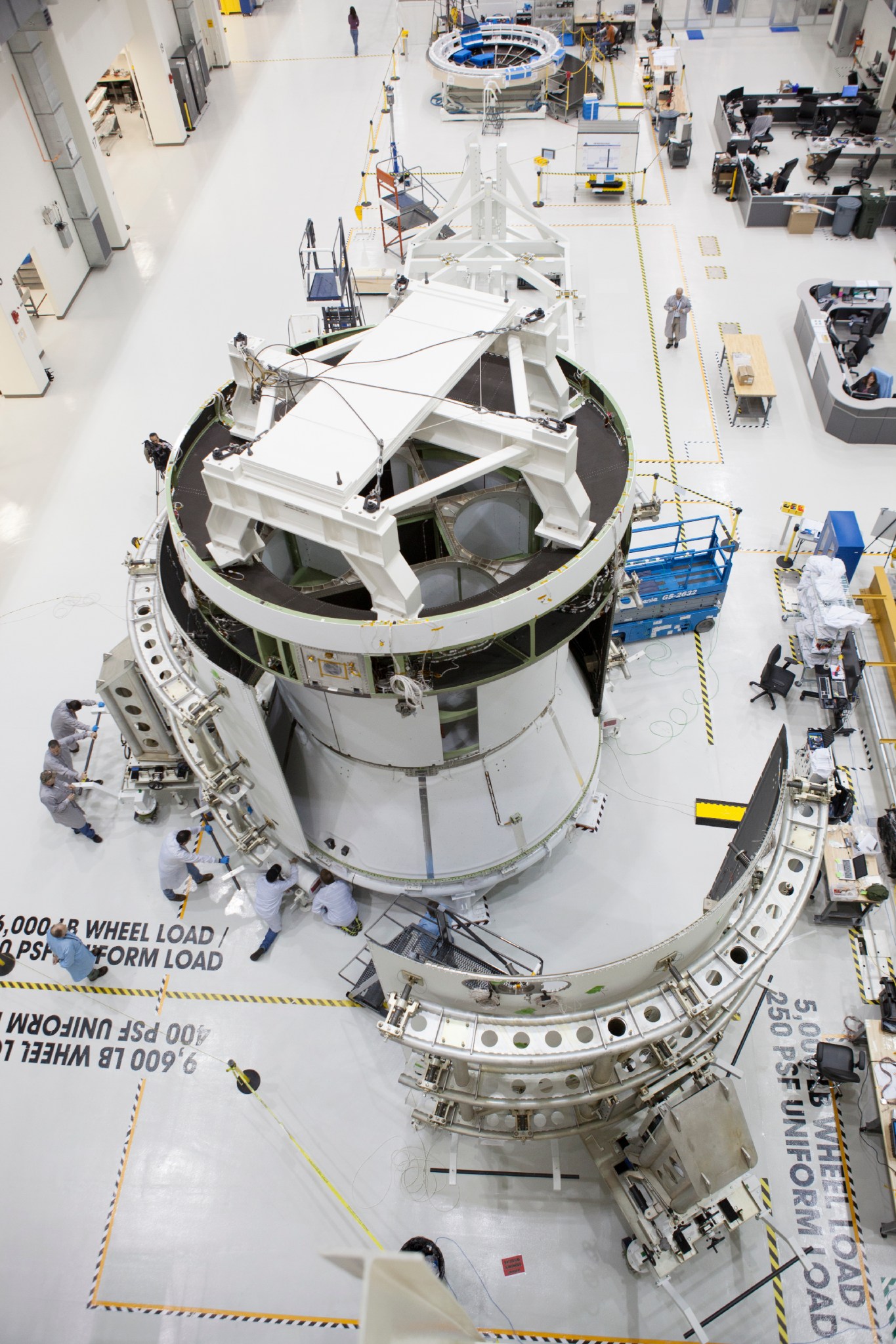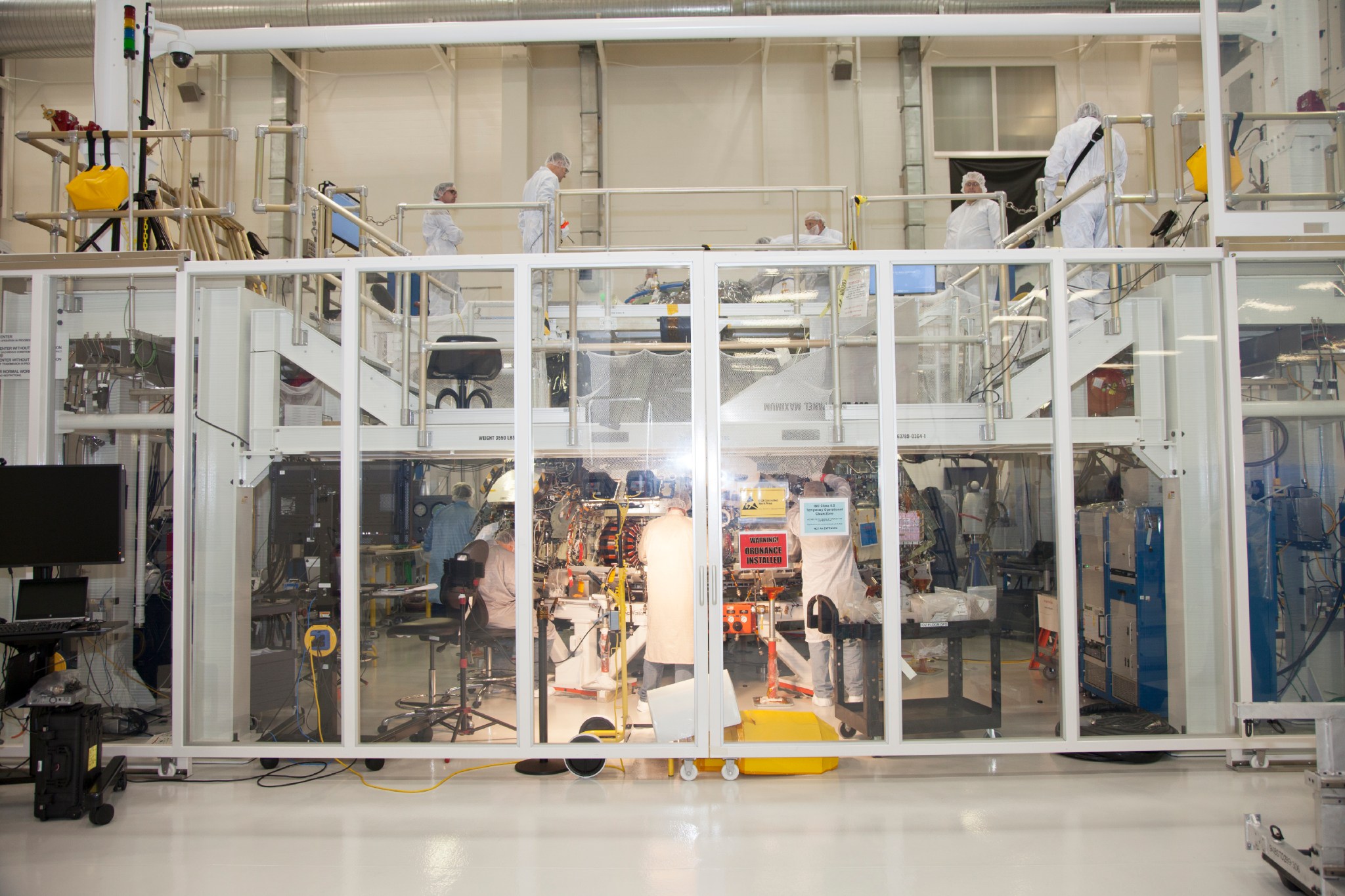The second of three major parts of the spacecraft that will launch into orbit on Orion’s first mission this fall is complete.
Work has been progressing steadily on all three main parts of Orion – the service module, the crew module and the launch abort system – and this month the service module joined the launch abort system in crossing the finish line.
Orion’s service module sits below the crew module and above the rocket that will launch Orion into space. The recently completed service module, which will fly during Orion’s first test flight, is a structural representation and will lack many of the key capabilities of the final service module. Service modules on future missions will provide power, heat rejection, the in-space propulsion capability for orbital transfer, attitude control and high-altitude ascent aborts. It will also house water, oxygen and nitrogen for the trip. But because Orion’s first mission will be a four-hour-long, unmanned flight test, many of those systems aren’t needed just yet. Instead, this first service module will primarily be responsible for the structural support involved in carrying the crew module and launch abort system as they’re launched into space.
Since the crew module and launch abort system together weigh more than 37,000 pounds at liftoff, that’s no easy task. The crew module gets some help with it from three massive panels, called fairings, that encase the service module and shield it from heat, wind and acoustics. They support half of the crew module and launch abort system’s weight during launch and ascent, before they’re jettisoned more than 100 miles up. After that, the loads on Orion are much lower and can be carried by the service module alone.
› Watch video of a recent test of the fairings’ jettison system
To ensure that the service module and its fairings are up to the challenge, it will spend two weeks in February undergoing tests. Engineers will carefully apply small amounts of stress to the structure to test its stiffness and verify it reacts as predicted. If it does, they’ll up the ante, pushing and twisting it from multiple directions.
If it can withstand the strain, the engineers will know it’s ready for flight.
› Read about Orion’s launch abort system
The launch abort system was completed in December, and the crew module is coming right along. Engineers at Kennedy Space Center recently completed the complex welding that’s required to make sure Orion’s propulsion and life support fluid systems are leak tight.
To minimize the number of mechanical joints, which are invitations for leaks, the fluid systems are welded together as one piece into a virtual spaghetti bowl that surrounds the Orion pressure vessel. The process required more than 260 individual welds in complicated geometries, each of which was then X-rayed to ensure that it was good.
Over the next three months, Orion’s thermal protection system will be installed – tiles on the top of the crew module and the largest heat shield of its kind ever built. With that in place, the crew module, service module and launch abort system will be ready to mate this spring.






























